A Lanna masterpiece
One of the country's most beautiful and original temples in Hang Dong, Chiang Mai

Amid many concrete temples in the northern province of Chiang Mai, very few maintain the original design and concept of a traditional northern temple. Among the rare ones is Wat Intharawat, better known as Wat Ton Kwen, in Hang Dong district, which truly represents Lanna architecture.
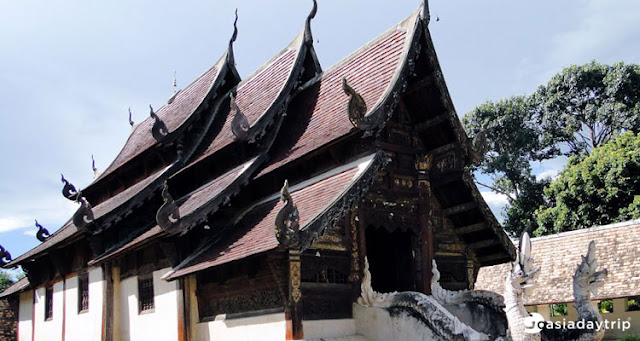
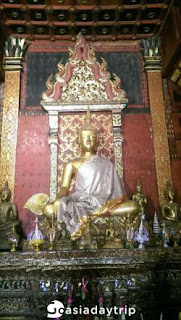
"This temple is comparable to Mount Meru, the centre of the universe, surrounded by a sand space compared to that of the Srithundorn Ocean. Its plan is similar to that of Wat Pa Daed in Mae Chaem district which has some new buildings," Saiklang Jindasu, senior archaeologist of the Seventh Regional Office of Fine Arts, Chiang Mai, said.
According to him, it was built during the reign of the sixth ruler of Chiang Mai, King Kawilorot Suriyawong, around 1857, the same time as the fourth reign of the Rattanakosin period. The way it was neatly constructed convinces historians that it's the work of royal craftsmen. The landscape of the temple is still as it was at the time of its establishment -- having a large sand space around the prayer hall (vihara) and a pagoda adjacent to the hall.
The temple's religious function zone consists of the vihara, a gallery, or sala bat, and a four-porched pavilion. The major things are the vihara and pavilion.
The vihara is rectangular in shape and has a three-tiered roof at the front and a two-tiered roof at the rear, both paved with brown glazed tiles. It is made of wood like many other prayer halls in the North of Thailand. Its gables, roof ridges, brackets and other parts are adorned with fine stucco motifs and wood carvings with a rare kind of colourful mirror called krajok chuen -- thin lead plates coated with coloured mercury. The almost-extinct art of making krajok chuen is being revived by northern craftsmen. Outstanding features are the foliage and Naga's head motifs on the roofs and gables and the stucco devasculptures inside the vihara. The interior walls of the vihara are decorated with gilded red lacquer and murals which are mostly faded.
The principal Buddha statue in the Subduing the Mara posture is older than the temple and believed to have been relocated from another temple. It dates to the middle of the Lanna period since it reflects the influence of Sukhothai art with fine curves and lines. It is placed on a busabok (squared pavilion), depicting the Naga. The wall behind it is adorned with arches for containing metal Buddhist votive tablets. The votive tablets include those in a bodhi leaf shape and the Subduing the Mara posture and those covered with the Naga motifs.
The pavilion, built in 1858, is an open-spaced wooden structure supported with round columns. The gable is adorned with stucco art and the two-layered roof is paved with local terracotta tiles called krabuang din sor, which are curvy and allow birds to cling onto them easily. In the middle of the roof is a small pavilion called prasart fuang, commonly found in the Northeast. The way the pavilion's components are assembled with teak dowels and handmade nails is a unique local construction technique.
It is the only four-porched pavilion in the shape of a mondop in the North. Inside it are a sedan chair for enshrining the Buddha's relics and a traditional pipe for pouring scented water in order to bathe the relics.
In the past, there was a tradition for each Chiang Mai ruler to take the Lord Buddha's relics from Wat Phra That Si Chom Thong to Muang Chiang Mai. On the way, the procession would stop at Wat Ton Kwen for a week and the relics would be kept in the temple's pavilion during this period and be worshipped by locals. Next destinations were Wat Suan Dok and Wat Phra That Doi Suthep. Last year, this tradition called hae that khao muang was reintroduced by Chiang Mai University's fine arts faculty.
Restoration of the temple was undertaken in 1978, 1987 and from 2002-2003, which included the conservation of murals, the repair of a temple wall and minor repair of the vihara.
This temple was named after Ton Kwen, a kind of plant called takhob pa in Thai and Madagascar plum, batoka plum, governor's plum or Indian plum in English. It yields flowers and new leaves from December to April. Fruit becomes ripe from March to July and is eaten by birds, and in this way its seeds are spread. Besides Ton Kwen, the temple compound has tall trees like toddy palm trees which have served as a landmark for travellers to see the temple from a long distance.
It is not an overstatement to say that anyone wanting to see a masterpiece of Lanna architecture must visit Wat Ton Kwen.
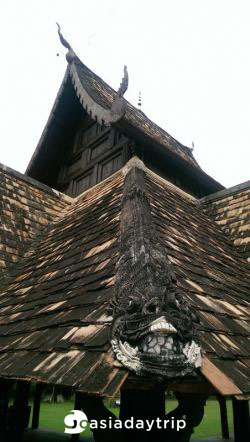
The Pavillion

Wat Ton Kwen
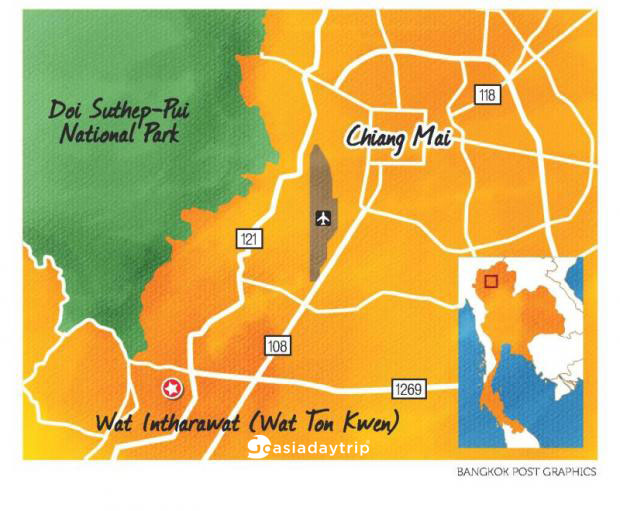
Wat Ton Kwen is located in Hang Dong district, about 700km from Bangkok and 13km from Chiang Mai city. To get there, take either Highway 108 or Highway 121 from Chiang Mai, turn right onto Highway 1269, go further for a few kilometres and find the temple on the left.
Writer: Pichaya Svasti
Source: Bangkok Post

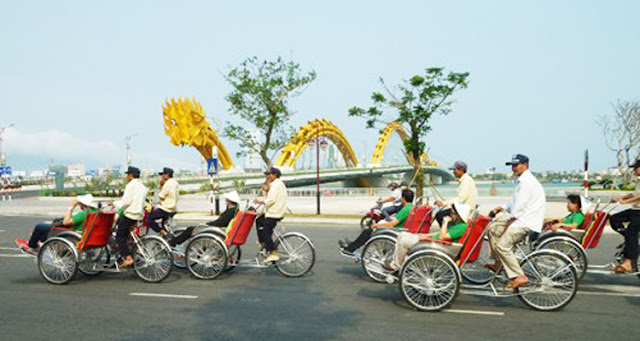
Comments
Post a Comment